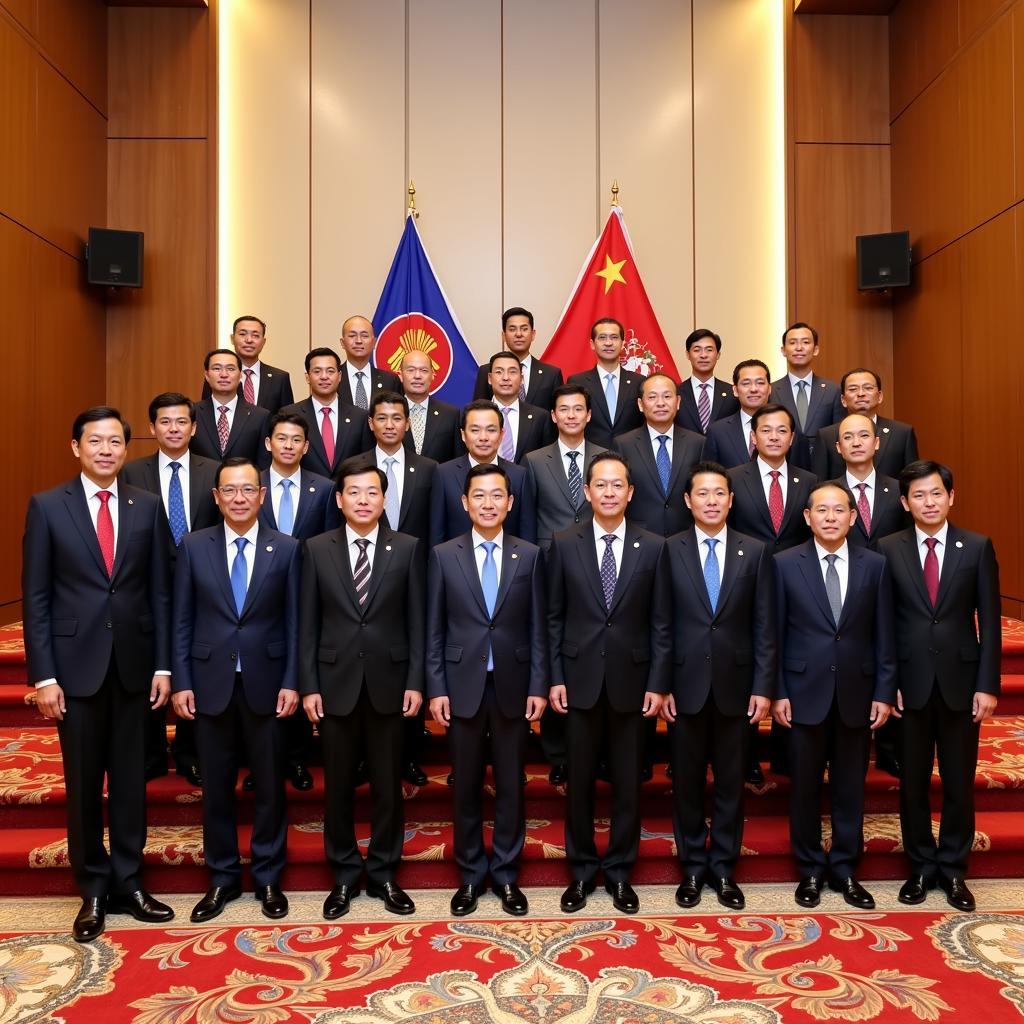ASEAN, an acronym for the Association of Southeast Asian Nations, represents a dynamic and diverse region brimming with rich cultural heritage, economic prosperity, and a shared commitment to regional cooperation. This article delves into the multifaceted landscape of ASEAN, exploring its origins, key pillars, economic powerhouse, and cultural vibrancy. Join us as we embark on a journey to understand why ASEAN is a region worth exploring, both for its intrinsic value and its significant impact on the global stage.
A Glimpse into the Genesis of ASEAN
Founded in 1967 by five founding members – Indonesia, Malaysia, Philippines, Singapore, and Thailand – ASEAN’s primary goal was to foster regional stability and economic growth. Throughout the years, the organization expanded to include Brunei, Cambodia, Laos, Myanmar, and Vietnam, solidifying its role as a prominent force in Southeast Asia. The ASEAN Charter, adopted in 2007, formalized the organization’s principles, objectives, and mechanisms, further strengthening its position as a regional powerhouse.
Pillars of ASEAN: Shaping a Brighter Future
ASEAN’s progress is rooted in its strong commitment to several key pillars that drive its multifaceted agenda. These pillars are:
- Political and Security Cooperation: ASEAN prioritizes peace and stability through dialogues, conflict resolution mechanisms, and collaborative efforts to address regional security challenges. The organization works to build trust and understanding among its member states, fostering a peaceful and harmonious environment for growth and development.
- Economic Cooperation: ASEAN’s economic agenda focuses on promoting trade, investment, and economic integration within the region. Through initiatives like the ASEAN Economic Community (AEC), the organization aims to create a single market and production base, enhancing economic competitiveness and attracting foreign investment.
- Social and Cultural Cooperation: ASEAN values its diverse cultural heritage and encourages collaboration in education, health, tourism, and other social sectors. The organization believes in fostering cultural exchange, promoting understanding, and enhancing human resource development to build a more resilient and integrated region.
ASEAN: An Economic Powerhouse in the Making
The region’s combined GDP makes ASEAN one of the world’s most promising economic blocs. Several factors contribute to its economic strength:
- Growing Middle Class: ASEAN boasts a rapidly expanding middle class, creating significant demand for goods and services, fueling economic growth and stimulating consumer spending.
- Abundant Natural Resources: From oil and gas to minerals and timber, ASEAN is rich in natural resources that contribute to its economic potential.
- Strategic Location: Situated in the heart of Southeast Asia, ASEAN holds a strategic location along crucial trade routes, facilitating trade and connectivity with other regions.
- Young and Dynamic Population: ASEAN’s young and growing population presents a valuable demographic dividend, driving innovation, entrepreneurship, and economic dynamism.
Expert Insight:
*”ASEAN’s economic growth is driven by its diverse economies, robust trade links, and a commitment to regional integration. The organization’s focus on infrastructure development, digital transformation, and human capital development will further accelerate its economic progress.” – Dr. [Insert expert name]
ASEAN’s Cultural Tapestry: A Mosaic of Tradition and Modernity
ASEAN’s cultural landscape is as vibrant and diverse as its geographical landscape. Each member state boasts a unique cultural heritage, enriched by traditions, languages, arts, and cuisines.
- Rich Cultural Heritage: ASEAN’s cultural diversity is reflected in its captivating traditions, ranging from elaborate festivals and ancient temples to traditional dances and vibrant art forms.
- Global Cuisine: ASEAN’s culinary scene is a delight for food lovers, showcasing the region’s diverse flavors, spices, and cooking techniques.
- Creative Arts: From traditional music and dance to contemporary art forms, ASEAN boasts a thriving creative scene, showcasing the region’s artistic talents and cultural expressions.
Exploring ASEAN: A Journey of Discovery
Whether you’re seeking adventure, cultural immersion, or a taste of Southeast Asia’s vibrant energy, ASEAN offers something for everyone. Here are some compelling reasons to explore this region:
- Cultural Wonders: Visit ancient temples, explore bustling markets, witness colorful festivals, and experience the rich cultural tapestry of ASEAN.
- Natural Beauty: Discover pristine beaches, lush jungles, towering mountains, and breathtaking landscapes that showcase the region’s natural splendor.
- Adventure and Exploration: From hiking to diving, trekking to kayaking, ASEAN provides ample opportunities for adventure enthusiasts to explore its diverse landscapes.
- Culinary Delights: Indulge in a culinary journey, savoring the region’s diverse flavors and spices, from street food to fine dining.
- Warm Hospitality: Experience the warmth and hospitality of ASEAN people, known for their friendliness and welcoming nature.
FAQ
Q: What is the main language spoken in ASEAN?
A: While each country has its own official language, English is widely used as a lingua franca for communication in business, tourism, and government affairs.
Q: What are some of the key challenges facing ASEAN?
A: ASEAN faces challenges like income inequality, environmental sustainability, and geopolitical tensions. The organization addresses these challenges through collaborative efforts and regional initiatives.
Q: How can I get involved with ASEAN?
A: You can get involved by learning more about the region, supporting ASEAN-related businesses, promoting cultural exchange, and advocating for regional cooperation.
Q: What are some popular tourist destinations in ASEAN?
A: Popular destinations include Angkor Wat in Cambodia, the beaches of Thailand, the cultural heritage of Singapore, and the natural wonders of Vietnam.
Explore Further:
- asagao to ase san: Discover the historical ties between Japan and ASEAN.
- ase santeria: Learn about the influence of Afro-Latin American culture in the region.
- asea restaurant santorini menu: Explore the culinary delights of ASEAN cuisine.
- asean aung san suu kyi maharthiya: Discover the impact of prominent figures on ASEAN.
- ase high school san fernando valley: Learn about education and youth engagement in the region.
Call to Action:
Discover the vibrant world of ASEAN and stay connected with the latest news, insights, and opportunities by visiting [Asean Media Website URL]. For any inquiries or assistance, contact us at [Phone number], [Email address], or visit our office at [Address]. We are here to support your journey to explore and understand ASEAN.


